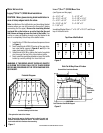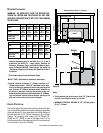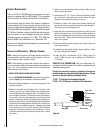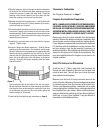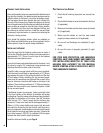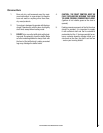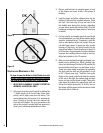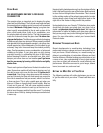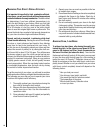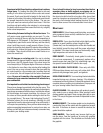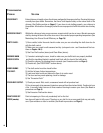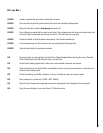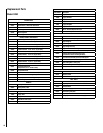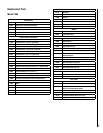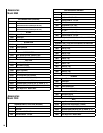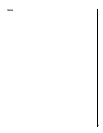
14
maximizing your sTove’s overall efficiency
It is important to know that for high, combustion efficient,
clean burns, you will need to have sufficient temperatures
inside the firebox for thorough combustion. The best method
for determining if you have sufficient temperatures is to
watch the brick lining in your firebox. When you first light
your stove, the bricks will turn a dark brown or black. After
20 to 30 minutes of a hot fire, most of the bricks should
return to near their original light brown or yellow color. This
means the bricks have reached a high enough temperature
for your stove to achieve high combustion efficiency.
Second, and just as important, is achieving a high level
of heat transfer efficiency. Slowing the rate of flow through
the stove or insert enhances heat transfer, thus allowing
more time for heat to be transferred into your home. To
do this, be sure to thoroughly preheat your stove and then
reduce the amount of primary air by closing the draft con-
trol (lower left) to about 1/2 to 3/4 open. This will decrease
the excess oxygen in your flue, which carries heat up your
chimney, but should still be enough air to allow the stove to
produce its maximum heat output. (More air may produce
a lightly greater amount of heat, but will greatly increase
wood consumption). When the area being heated reaches
a comfortable temperature, slow the burn rate by closing
the control to further improve heat transfer.
To get the most out of your stove, you will need to combine
good combustion efficiency with good heat transfer practices.
The following are some tips on how to operate your stove
to achieve the highest overall efficiency.
1. Thoroughly preheat your stove before slowing the
burn rate by closing the draft control.
2. Measure the stove temperature at the hottest point
on the stove top or face. Use this information to
repeat burn rates.
3. Once preheated, add wood (if needed) and partially
close the draft control (lower left).
4. Operate your stove as much as possible in the low
to medium burn ranges.
5. Do not lower the draft setting so low as to completely
extinguish the flames in the firebox. Check for at
least some small flames 20 minutes after setting
the draft control.
6. Do not continually operate your stove in the high
(wide open) setting. This wastes wood by carrying
a great deal of heat up the chimney and can damage
your stove and chimney.
7. Go outside and check your chimney. More than a
very small amount of smoke indicates wasted heat,
creosote build up, and pollution.
achieving clean, long Burns
To achieve long burn times, after having thoroughly pre-
heated the stove, let the stove top cool down to 275 de
-
grees to 400 degrees (on Elites, locate thermometer on
the face of the insert just above the door). Now load the
firebox and set the draft control. At this point, you may need
to burn the stove with the draft open for a few minutes to
ignite the wood. All Country™ Collection stoves are EPA
tested for emissions at low burn with the air control com-
pletely closed. Whether or not you should burn your stove
with the air control completely closed will depend on the
following factors:
* How you load your wood.
* Your chimney type, height, and draft.
* Your wood type and its moisture content.
* The temperature of the stove.
* Which model Country Collection stove
or insert you have.



